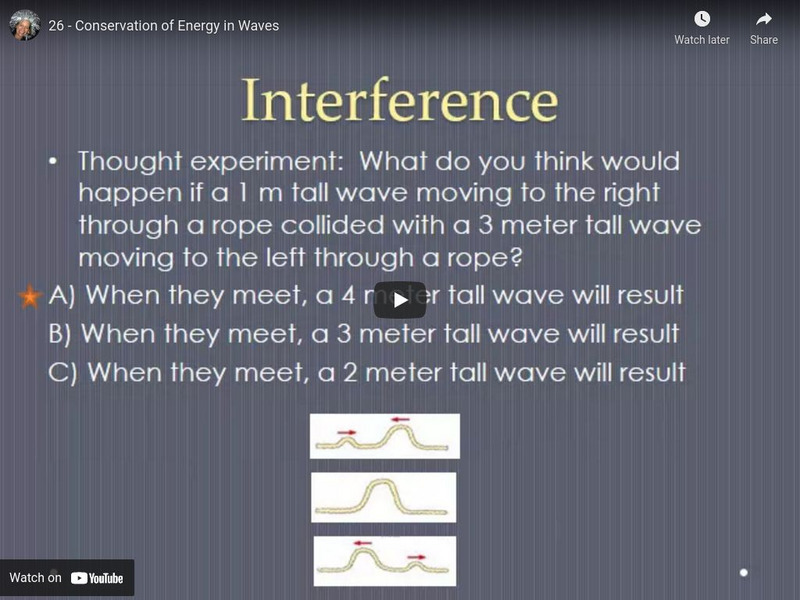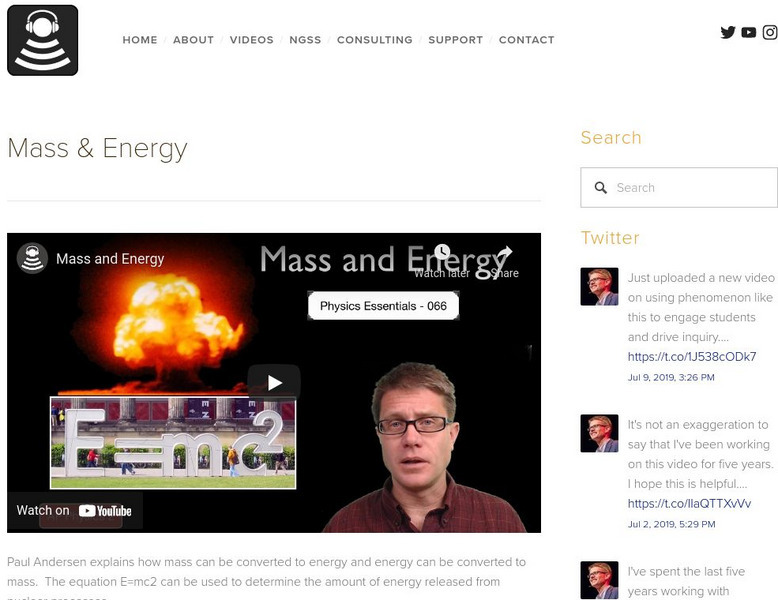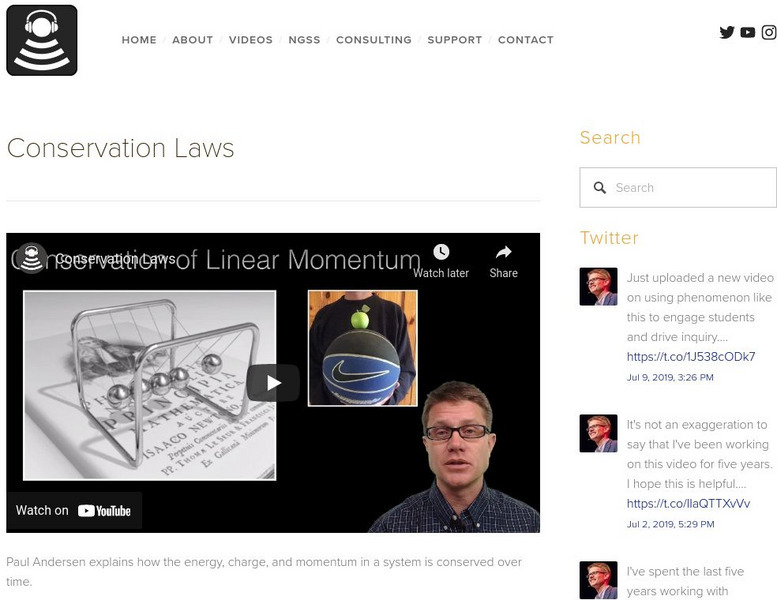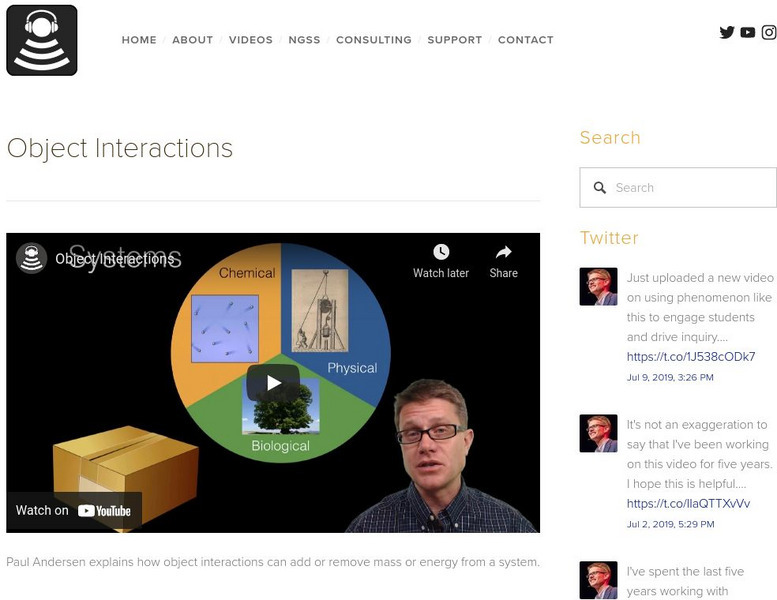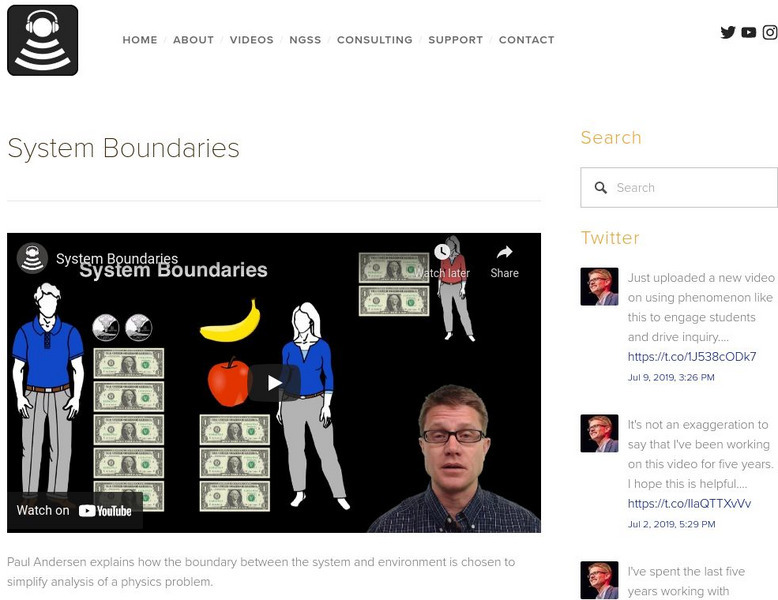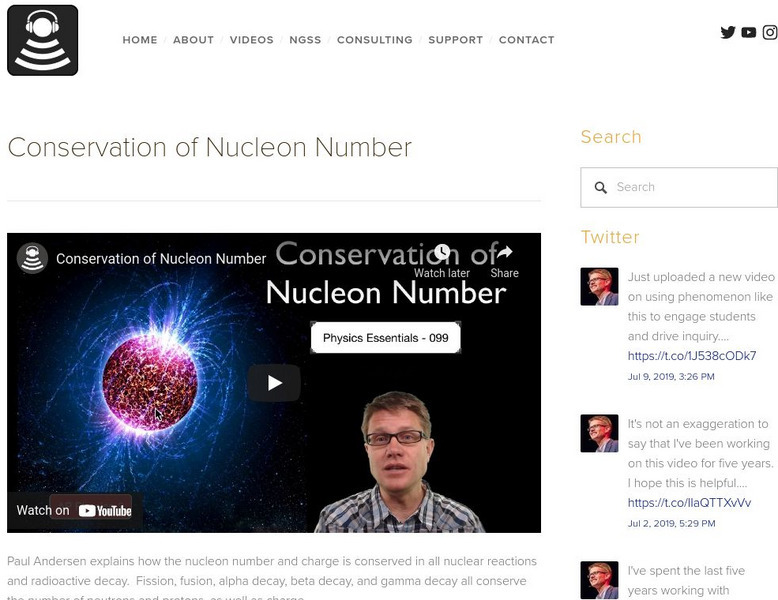Hi, what do you want to do?
SciShow
Solar Energy
Hank explains the power of solar energy and describes how it may fit into our diversified energy future.
Curated Video
Energy Conversions
2 minute video describing the Law of Conservation and how energy can change forms for middle school science
Curated Video
How Can We Prove a Force is Conservative? (Conservative vs Non Conservative Force)
Understand what makes a force conservative or non-conservative through four clear conditions. Learn how path independence and energy conservation define forces like gravity and contrast with forces like friction.
Curated Video
Why Potential Energy is Negative of Work Done? (Derivation of Potential Energy)
Learn how work done by forces changes an object’s potential energy and how energy interchanges between kinetic and potential forms. Illustrated with relatable analogies like the banana toss and other examples
Curated Video
Equations of Work Done by an External Force (and The Law of Conservation of Energy)
Understand how external and non-conservative forces affect mechanical energy. Learn to apply the work-energy theorem and energy statements for Physics students
Curated Video
What is the Law of Conservation of Energy?
The law of conservation of energy tells us that energy is neither created or destroyed - just converted from one form to another. This means that we cannot make energy from nothing and energy does not just disappear. Energy, however, can...
Visual Learning Systems
Energy Review
This video reviews the topics covered in the Energy series. In this series, we explore the various forms of energy, including mechanical, nuclear, heat, chemical, and electromagnetic energy. We delve into the concepts of kinetic and...
Visual Learning Systems
Understanding the Law of Conservation of Energy
In this video, the concept of the law of conservation of energy is explained. It highlights that energy cannot be created or destroyed, but it can only change its form. This video is part of the 12-part series, Forms of Energy.
ProEdify
Understanding Non-Conservative Forces: Kinetic Friction and Air Resistance
This video introduces the concept of non-conservative forces, focusing on kinetic friction and air resistance as examples. It explains how these forces cause mechanical energy to change or dissipate within a system, converting kinetic...
Visual Learning Systems
Energy Quiz
This video is a quiz over the topics covered in the Energy series. In this series, we explore the various forms of energy, including mechanical, nuclear, heat, chemical, and electromagnetic energy. We delve into the concepts of kinetic...
Visual Learning Systems
Introduction to Energy
This video introduces the Energy series. This series of videos describes the five main forms of energy and how to differentiate between them. Students will learn about potential and kinetic energy. Everyday examples illustrate how we...
Smithsonian Institution
Smithsonian Science Education Center: Fired Up About Energy
Did you ever want to see inside your student's minds while you are teaching a concept? Through this video, you can see the common assumptions student's hold about energy and how you can build on these ideas to explain the Law of...
Other
Physics Girl: Is Energy Always Conserved?
When light passes through the universe and is redshifted by the expansion of space itself, how is energy conserved? The stretched light has a longer wavelength and therefore a lower energy. Is energy conserved? If so, where does it go?...
Other
Conservation of Energy in Waves
High school teacher Kate Nichols explains that wave energy is equal to the amplitude of a wave. Looks at different scenarios where we may notice that wave energy is being conserved or not. The conversion of wave energy into another type...
Bozeman Science
Bozeman Science: Mass and Energy
In the following video Paul Andersen explains how mass can be converted to energy and energy can be converted to mass. [3:30]
Bozeman Science
Bozeman Science: Systems
The following video narrated by Paul Andersen explains how systems are two or more objects that interact with one another. If a system has no relevant internal structure it can be treated as an object. The conservation laws apply to...
Bozeman Science
Bozeman Science: Conservation Laws
The following video narrated by Paul Andersen explains how the energy, charge, and momentum in a system is conserved over time. [4:53]
Bozeman Science
Bozeman Science: Object Interactions
The following video narrated by Paul Andersen explains how object interactions can add or remove mass or energy from a system. [2:14]
Bozeman Science
Bozeman Science: System Boundaries
In this video Paul Andersen explains how the boundary between the system and environment is chosen to simplify analysis of a physics problem. [3:13]
Bozeman Science
Bozeman Science: Emission or Absorption Spectra
In the following video Paul Andersen explains how the photons emitted from or absorbed by an atom or nuclei is directly related to electrons moving between energy level. Absorption and emission are a direct result of the conservation of...
Bozeman Science
Bozeman Science: Physics: Kirchhoff's Loop Rule
In this, video Paul Andersen explains how Kirchhoff's Loop Rule can be used to calculate the voltage of different components of a circuit. The sum voltage throughout an entire loop will sum to zero following the law of conservation of...
Bozeman Science
Bozeman Science: Bernoulli's Equation
In the following video Paul Andersen explains how Bernoulli's Equation describes the conservation of energy in a fluid. The equation describes the pressure energy, potential energy, and kinetic energy of a fluid at a single point. A...
Bozeman Science
Bozeman Science: Physics: Kirchhoff's Junction Rule
In this video, Paul Andersen explains how Kirchhoff's Junction Rule can be applied to series and parallel circuits. Kirchhoff's Junction Rule is an application of the conservation of charge. The current into a junction will always equal...
Bozeman Science
Bozeman Science: Conservation of Nucleon Number
In the following video Paul Andersen explains how the nucleon number and charge is conserved in all nuclear reactions and radioactive decay. Fission, fusion, alpha decay, beta decay, and gamma decay all conserve the number of neutrons...








